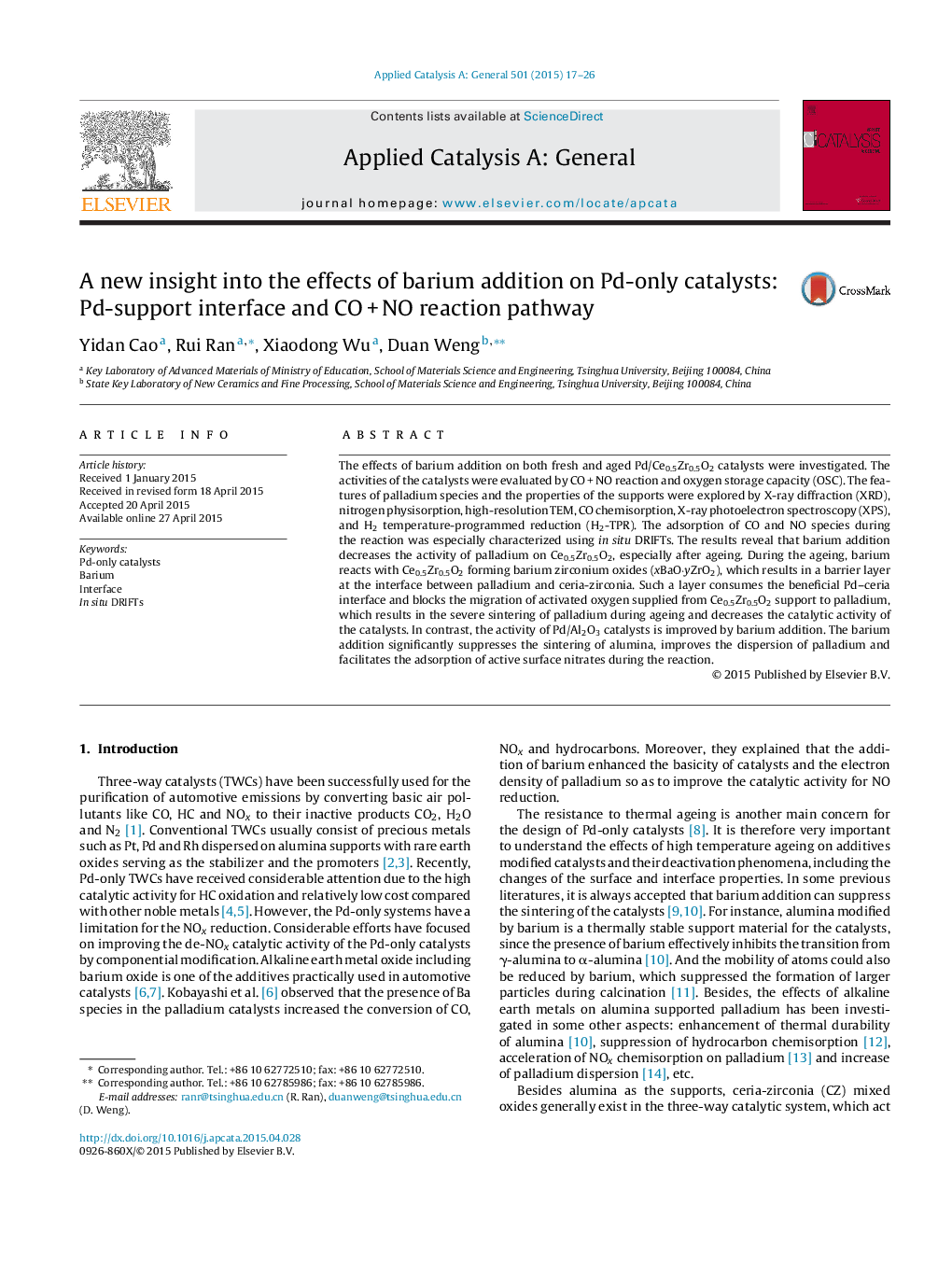| Article ID | Journal | Published Year | Pages | File Type |
|---|---|---|---|---|
| 39152 | Applied Catalysis A: General | 2015 | 10 Pages |
•Barium deactivates Pd/Ce0.5Zr0.5O2 for CO + NO reaction especially after ageing.•A barrier layer in the form of xBaO·yZrO2 forms at the Pd–Ce0.5Zr0.5O2 interface.•The barrier layer blocks the migration of activated oxygen from support to Pd.
The effects of barium addition on both fresh and aged Pd/Ce0.5Zr0.5O2 catalysts were investigated. The activities of the catalysts were evaluated by CO + NO reaction and oxygen storage capacity (OSC). The features of palladium species and the properties of the supports were explored by X-ray diffraction (XRD), nitrogen physisorption, high-resolution TEM, CO chemisorption, X-ray photoelectron spectroscopy (XPS), and H2 temperature-programmed reduction (H2-TPR). The adsorption of CO and NO species during the reaction was especially characterized using in situ DRIFTs. The results reveal that barium addition decreases the activity of palladium on Ce0.5Zr0.5O2, especially after ageing. During the ageing, barium reacts with Ce0.5Zr0.5O2 forming barium zirconium oxides (xBaO·yZrO2), which results in a barrier layer at the interface between palladium and ceria-zirconia. Such a layer consumes the beneficial Pd–ceria interface and blocks the migration of activated oxygen supplied from Ce0.5Zr0.5O2 support to palladium, which results in the severe sintering of palladium during ageing and decreases the catalytic activity of the catalysts. In contrast, the activity of Pd/Al2O3 catalysts is improved by barium addition. The barium addition significantly suppresses the sintering of alumina, improves the dispersion of palladium and facilitates the adsorption of active surface nitrates during the reaction.
Graphical abstractFigure optionsDownload full-size imageDownload high-quality image (239 K)Download as PowerPoint slide
